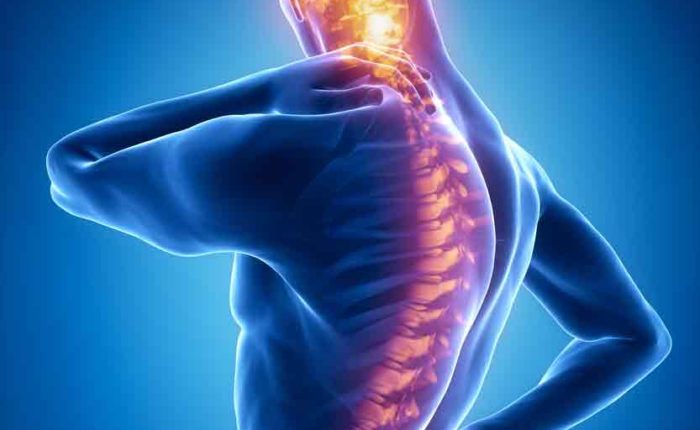The joints connecting each of the vertebrae in your spine are called facet joints. Like all joints in the body, the facet’s job is to promote and allow movement and stability. In between the vertebrae in the joint are cartilage discs that aid in the stability of your spine. When anything upsets the balance of your spine, all components are affected. This disruption can be due to aging or traumatic injury and is known as facet joint syndrome.
Common symptoms and signs of facet joint pain
Just like the other joints in the body, the facet joints are susceptible to irritation, inflammation, and misalignment due to injury or other conditions. As the spine runs through a length of the body, the pain can vary in location. Symptoms of facet joint pain can include:
- Stiffness in the back.
- Pain at the location of the joint.
- Radiating pain into the arms and legs.
- Pain increasing from spinal extension (leaning back) or leaning to the sides.
- Intensified pain after long periods of standing.
- Neck and shoulder pain.
- Neck and shoulder limited range of motion.
- Lower back pain.
- Lower back limited range of motion.
What causes facet joint pain?
The cause of facet joint pain can vary depending on the location of the spine affected. Low back facet pain is typically caused by wear and tear due to aging. Neck and mid-back facet joint pain is more common as a result of trauma such as whiplash.
Certain risk factors may also raise the risk of facet joint pain. Those factors include:
- Overuse.
- Being overweight.
- Poor posture.
- Spinal conditions.
How is facet joint pain diagnosed?
Back pain can be caused by a number of things. If pain has driven you to a doctor, you’ll typically have a full exam to rule out any issues and reach a diagnosis. Your doctor will ask you to move and stand so they can evaluate how the pain affects you. They may also do a physical exam, feeling for tender spots along your spine. Imaging may be ordered for a better look of what’s happening internally.
How can facet joint pain be treated?
Back pain can quickly affect your quality of life. Your doctor may recommend one or a combination of methods to help relieve your facet joint pain. You may find yourself in physical therapy. Between your doctor and physical therapist, you are sure to be on your way to relief from your pain.
Treatment options can include:
- Heat or cold therapy — Your physical therapist may recommend this treatment for home use. Heat therapy allows for boosted circulation, relaxed muscles, and dilated blood vessels supporting oxygen and nutrient flow to tissue. Cold therapy can constrict blood flow, which helps to reduce swelling.
- Medications — NSAIDs, muscle relaxers, topical creams or patches may be beneficial in helping relieve your facet joint pain.
- Proper posture — If poor posture is the culprit causing your pain, adjustments to correct your posture may help alleviate pain.
- Physical therapy and exercise — Guided by your physical therapist, you can go through stretches and strengthening exercise routines designed to best help release your facet joint pain.
Exercises that can help with facet joint pain release
Your physical therapist will instruct you how to properly perform any exercises to best help release your facet joint pain. It is important to inform your physical therapist of any changed or worsening pain so they can make sure that you are performing stretches correctly or help you address any other issues. Exercises they may have you do include:
- Child’s pose — This pose helps release pressure on your facet joints by helping lengthen the spine when you extend your arms out in front of you.
- Pelvic tilt — This stretch helps to strengthen the muscles of your lower back and abdomen.
- Plank — This balancing exercise helps strengthen your core and glute muscles and can be modified depending on your abilities.
- Knee-to-chest stretch — The knee-to-chest stretch involves drawing one or both legs to the chest while lying on the floor; it can help release facet joint pain.
- Walking — Gentle aerobic exercise, like walking, can help reduce your back pain.
SOL Physical Therapy can treat your facet joint pain
Our SOL Physical Therapy team of experts is ready to help you find relief from your faucet joint pain. You shouldn’t suffer in pain any longer than necessary. Our team will design an individualized plan to best help you find the pain relief you deserve.
Contact our team today for more information or to schedule an initial appointment.


